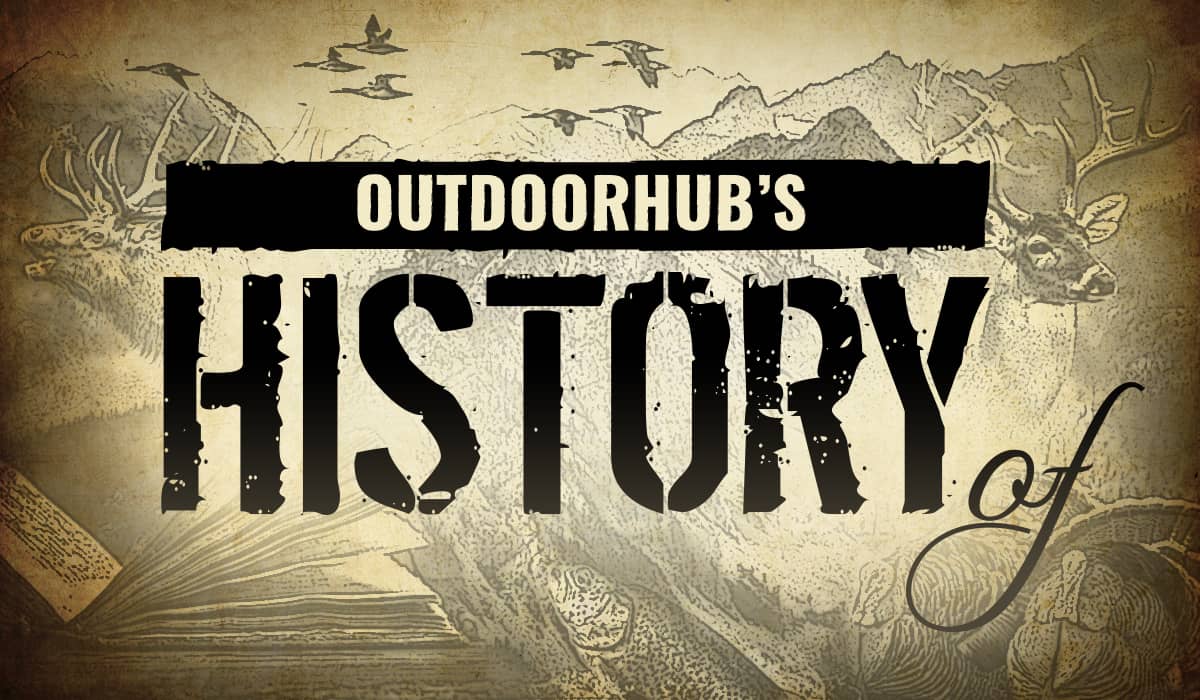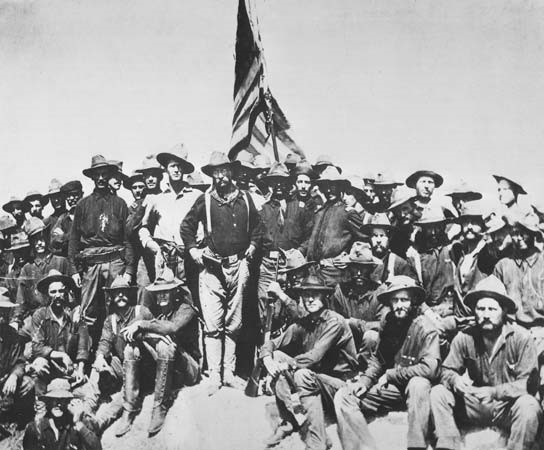1911 Pistol: The History Behind One of Today’s Most Popular Handgun
OutdoorHub Reporters 06.20.18

In this installment of our ‘History of’ series, we’re taking a look at the iconic 1911 pistol, and the history behind what made it such a popular firearm. Without further ado, kick your feet up and enjoy:
The Dawn of the 20th century saw leaps in technological engineering with great expectations for more inventions almost daily. Politically, it was the final preparations to a global showdown between the great powers of Europe as Germany’s Kaiser Willhelm II alienated his cousins and upset the alliances his fired minister, Otto von Bismarck, painstakingly assembled. The last reaches of the “unknown” world were claimed by colonial powers, and an upstart nation not yet done pacifying its own interior made an entry into the world stage in the Spanish America War. Cowboys. That’s what Americans were known as in 1898. Because cowboy guns were what they carried.

The Colt Single Action Army (Model 1873) in .45 Long Colt – though in military service it fired the shorter .45 Schofield to ease logistical issues as the US Army issued both Colts and Schofields – had been phased out of military service in 1892 in favor of the Colt Army in .38 Long Colt. Subsequent experience in the Philippines, however, led to a widespread dissatisfaction with the .38LC. True to the entrepreneurial spirit of the day, many alternatives were developed at once. One was the .38 Special by Smith & Wesson, the other was the development of another new round and a firearm to use it. The need for the Colt Model 1911 was palpable in this age of invention.
Any discussion of the Colt 1911’s birth would be remiss without a nod to its father, John Moses Browning (1855-1926). Born in Ogden, Utah Territory to Mormon pioneers, Browning began working on firearms at 7, building them at 10 and getting patents on them by 24. His list of inventions includes no less than eight cartridges, most of which are still in widespread use, and dozens of firearm designs; many of which are still in production because they have in common a simplistic robustness that delivers dependability. Initially partnered with Winchester, a renegotiation effort on royalties of what became the A-5 shotgun led him to take his designs to others including Fabrique National Herstal of Belgium, Remington and, of course, Colt.
Returning to the age of invention, all the great powers were moving away from the revolver to the symbol of handgun modernity: the self-loading or “automatic” pistol. Three pistols were tested in the 1899 by the US War Department: the Mauser C96 “Broomhandle”, the Steyer 1894 and the Colt 1900 by Browning. Browning’s design was the first semi-automatic pistol to use a full-length slide over the barrel instead of an operating bolt in a fixed receiver. It was also the first to pass the initial tests without failing more than half the time: the German tendency to use complicated engineering principles with small parts made the designs prone to failure in stressful situations.
The Colt 1900 was chambered in .38 ACP, not to be confused with the shorter .380 ACP. Its next competition was against the Model 1900 Luger in 7.63x25mm. Anticipating a demand for stopping power, the Luger was also submitted in 9mm. In 1904 the US military also evaluated pistol calibers, motivated exclusively by the .38 Long Colt’s lack of stopping power against Moro guerillas in the Philippines. The Army quickly returned an old firearm to service: the Colt .45. This led to a new requirement of any replacement US side arm: a caliber of no less than .45. The Colt and Luger were both under sized, and as of yet, there was not a semi-automatic cartridge in that size. Browning offered the .45 ACP cartridge the following year and the military was eager to see what pistols would be offered in that size.
In 1906, a new round of tests started with several applicants including Colt, Savage, Bergman, Luger, Knobley, Webley and White-Merril, all chambered in .45 ACP. All were quickly eliminated besides Luger, Colt and Savage. It was suggested that data from the tests be used to make some redesigns and each could resubmit for another test. Luger declined at that point for undisclosed reasons – only two original model 1907 Lugers in .45acp are known to have been produced: serial number 1 was destroyed in testing, number 2 is in a private collection. That left Savage and Colt in 1910: a 6000 round stress test where the pistols were simply put in water when they became too hot to fire. The new Colt passed, the new Savage had nearly three dozen failures.

The US Army officially adopted the Colt design in March of 1911 as the Colt Model of 1911. Not a moment too soon because by 1917, the US arsenals at Springfield and Rock Island (not the modern gun makers but the original federal arsenals) along with Colt had manufactured only 68,500 pistols. This was not enough as the US entered the Great War so licenses were granted to Remington, Winchester, Savage and a host of others. Sidearm availability was further supplemented with Colt and S&W model 1917 revolvers chambered in .45 ACP.
Experiences in the trenches of France led to changes implemented in 1926 with the Colt Model 1911A1. This included a larger grip safety spur to reduce slide bite, a shorter trigger and beveled cuts in the receiver behind the trigger: to make firing the gun easier for shooters with smaller hands. During the 1920’s other nations too began producing and issuing 1911s both under license (Norway and Argentina) and others simply began making copies.
World War II saw the production of approximately 1.9 million 1911A1s for US military and allied use. So many were produced that the US military chose to cancel post war orders and instead just refurbish and recondition what they had and continued reissuing them through the Korean and Vietnam wars. By the 1970’s, however, these weapons were showing their age and logistical concerns with NATO necessitated a replacement. By the mid 1980’s the US military replaced most of its .45s with Beretta M9 pistols. Some units, especially special ops, retained the 1911 and there have been several new models proposed for military use, such as the M45A1/USMC.
For civilian use, the 1911 has remained a favored icon of Americans. Many feel it is unpatriotic to not have at least one 1911 in the safe. To support, and perhaps even fuel, the love of the design, virtually every major firearms manufacturer (excluding Glock) and dozens of smaller companies sell a 1911 type pistol. It is one of the most commonly customized pistol platforms in the country with the number of aftermarket parts rivalling those for the AR-15. John Moses Browning’s apparent mantra of “keep it simple” maintains the 1911’s status as a favored gun over a century after its adoption.
Not everyone likes it of course, partially due to the popularity that has produced innumerable examples of bad models. Efforts to have the gun fire different calibers such as 9mm, .40S&W, .38 Super (John Dillinger’s favorite), etc. have met with more failures than successes. Similarly, trying to have different barrel lengths besides the 5” standard and the 4.25” “commander” has also required extensive debugging. It is not a gun that just anything can be done with. However, at the original specs, it has proven reliable, and many manufacturers have kept at it to create equally unfailing variants outside the standard. Though even Colt is not innocent of design tampering: the Series 70 split bushing and Series 80 internal safety have met with various levels of disgust from 1911 aficionados.
However, with companies like Springfield Armory Inc., STI, Kimber, Wilson, Les Baer, Sig Sauer and others selling quality 1911s at not always economical prices, it is clear Americans’ love for the 1911 has not completely been eclipsed by the hi-cap polymer gun. Nor does it seem that the final chapter of this gun’s history has been penned as Army Delta and Marine Recon, among others, entertain new models. There is only one explanation for that: in properly trained hands the darn thing continues to work.

